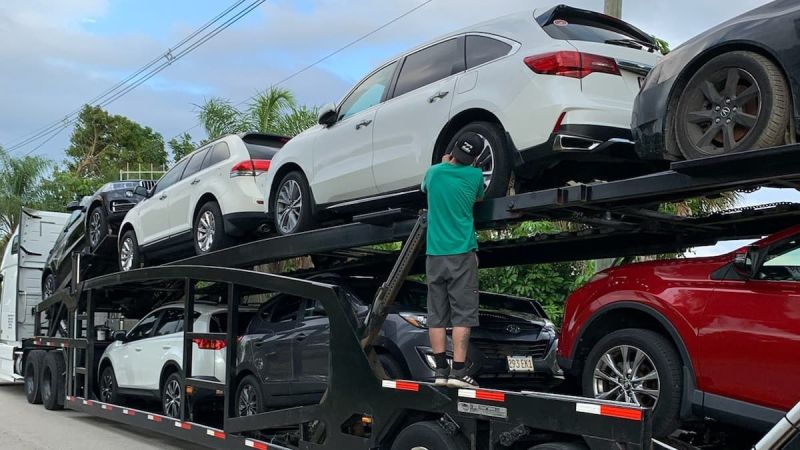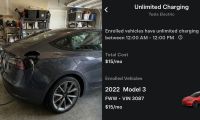Car shipping is a thriving business. Snowbirds who live in warm-weather areas such as Florida and spend the summer in the Northeast are regular customers of shipping companies. Those moving from one location to another or who need a car at college are also frequent users of car shipping services. As the American vehicle fleet changes and electric vehicles become more popular, shipping companies have been adapting.
Torque News sought the help of vehicle shipping industry experts to create this user guide. We communicated with Steve Yariv, owner of Dealers Choice Auto Transport (DCAT), and Mark Scholl, Executive Vice President of Operations & Retail Sales at Montway Auto Transport. Both of these companies regularly ship Tesla, Hyundai, Ford, GM, and other brand EVs on a daily basis.
Related Story: Car Talk Announces Golden Wrench Awards For Best Car Shipping Companies
Here are tips straight from the experts on how to best ship your electric vehicle (EV).
Shipping an EV is Much Like Shipping Any Vehicle
Before we begin, know that shipping any vehicle has some best practices. These include
1) Always call well in advance to book your vehicle shipping.
2) Try to be flexible. Pickup in your condo community can add time and expense.
3) Consider taking your vehicle to a local pickup hub for the best price. Many shippers offer shuttle service to and from local airports.
4) Shipping via an open trailer is much more affordable than shipping your vehicle in an enclosed trailer. Unless your vehicle is a one-of-a-kind exotic, open trailer shipping is almost always the best way to go.
5) Budget for a full wash and detailing after your shipping is complete. Vehicles do get dirty when shipped. Make an appointment with your local detailer to bring yourvehicle’s finish back to its best condition.
6) Remove your EZ Pass toll transponder. Why pay for tolls on the shipping route?
7) Wash your vehicle before shipping. It helps to make the inspection go more smoothly.
8) Ask your shipper for tips and suggestions. Shippers know best what you should do to prepare for shipping your vehicle.
9) Read reviews and get referrals. Like any business, reviews and referrals can tell you a lot about a shipper's performance.
Shipping an EV - The Most Important Thing To Consider - State of Charge
When we asked shipping experts if EV owners needed to take any special precautions before shipping an EV, both Mr. Yariv of DCAT and Mr. Scholl of Montway offered the same advice. Mr. Scholl said, “We ask EV owners to make sure their battery has a charge between 45 and 65%.” Mr. Yariv concurred, stating, “The client needs to make sure there is a lot of juice in those batteries. Unfortunately, some of the cars are so smart that they wake up from the vibration, and the batteries drain slowly in transport.”
Shipping an EV - Take Out Extra Keyfobs - Put In Mobile Chargers
Mr. Yariv has seen examples of EV owners placing extra fobs in the vehicle. His advice is, “Make sure keys are not left in cars during transport. The battery will die, and major issues start to happen when it's getting unloaded.” Mr. Scholl suggests that EV owners place their mobile chargers inside the vehicle when shipping. This is a smart move whenever a vehicle travels from one place to another, of course.
Shipping an EV - Plan To Charge Immediately Upon Delivery
Both Mr. Yariv and Mr. Scholl pointed out that an EV’s state of charge can go down when the vehicle is transported. Based on this first-hand observation by industry veterans, we suggest that EV owners plan to immediately charge up their EVs upon completion of the transport. If you are picking your EV at a hub, plan ahead. Find the closest DCFC station and budget time to charge. Having a backup plan in case that DCFC is fully occupied or out of service is also a smart idea.
Does It Cost More to Ship an EV than to Ship a Conventional Vehicle? Yes and No
Mr. Scholl and Mr. Yariv wished to convey to our readers that the consumer cost of shipping an EV is not meaningfully higher than the cost of shipping an equivalently sized conventional vehicle. However, both also offered some details on why the shipper’s cost may be a bit higher.
“In the unlikely event that a given shipment was all EVs, the heavy weight of EVs can dictate a smaller load, and in turn, the company might pay for eight spots when only using seven,” said Mr. Yariv. However, he emphasized that this is not likely and that, in his experience, EV owners do not pay more to ship their EVs than owners of regular vehicles pay. Mr. Scholl offered a similar viewpoint, saying, “Shipping costs are influenced by a variety of factors, including the size and weight of the vehicle." He went on to add, “However, pickup and delivery destinations and even the time of year are more important factors. For example, the difference in cost between shipping a Ford F-150 Lightning Crew Cab and an F-150 (gas-powered) Crew Cab from St. Louis, Missouri, to Pensacola, Florida, is only about $10. Because the Ford F-150 Lightning is heavier, it costs us a bit more to ship it.”
Shipping your EV from one place to another is not significantly different than shipping an internal combustion-powered vehicle. Most importantly, you should not be required to pay a premium to have your electric vehicle shipped. Follow the advice offered by these experts, and you should have no problems.
Our thanks to Mark Scholl, Executive Vice President of Operations & Retail Sales at Montway Auto Transport, and Steve Yariv, owner of Dealers Choice Auto Transport (DCAT), for helping Torque News with this story on how to ship a battery-electric vehicle.
John Goreham is an experienced New England Motor Press Association member and expert vehicle tester. John completed an engineering program with a focus on electric vehicles, followed by two decades of work in high-tech, biopharma, and the automotive supply chain before becoming a news contributor. In addition to his eleven years of work at Torque News, John has published thousands of articles and reviews at American news outlets. He is known for offering unfiltered opinions on vehicle topics. You can follow John on Twitter, and connect with him at Linkedin.
Image of vehicles being prepared for shipping courtesy of Jane Goreham.












